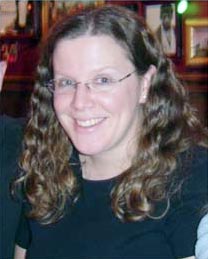Date
Cost
Free and open to the public
Location
Physical Science Building, Room 161
Description
Polyamides are amide-linked heterocycles that can be used in the molecular recognition of DNA. While heterocyclic pairings are able to distinguish DNA base-pairs, polyamide subunits can be connected, resulting in a hairpin motif. By incorporating novel hairpin turns, I found that various properties of the molecules can be tuned without altering their targeted sequences. Modifications that were found to result in enhanced binding affinities were utilized to bind promoter and enhancer elements of DNA in order to regulate genes associated with prostate cancer. However, polyamides do not prevent RNA polymerase elongation when bound to the coding region. The incorporation of a different hairpin subunit resulted in enhanced DNA sequenceselectivity. When conjugated to alkylating moieties, these molecules induced selective DNA damage and transcription arrest. Polyamidechlorambucil conjugates were generated to target histone H4c coding regions in colon carcinoma and chronic myelogenous leukemia, and resulted in positive biological effects while showing limited toxicity My postdoctoral work has been focused on the development of chemically-modified protein-based agents for in vivo applications. By applying a two-step transamination/oxime formation technique developed in the Francis group, we can directly convert filamentous fd bacteriophage with specific targeting abilities identified from library screens into useful imaging and therapeutic agents. Pyridoxal 5’-phosphate (PLP) mediated transamination is used, followed by reaction with aminooxy-functionalized moieties to install up to 3000 small molecules or PEG (polyethylene glycol) chains onto the phage coat proteins. We have utilized this modification for phage possessing single-chain antibody fragments (scFv’s) that target the EGFR, HER2, CD44, CD73, and HER3 receptors. In all cases, I have shown that their binding capabilities and specificities are not significantly altered, and demonstrated the utility of fluorophoremodified phage in multicolor fluorescence microscopy with live and fixed cells. Toward the development of MS2 bacteriophage-based agents, I have identified appropriate cancer cell lines for use in in vivo biodistribution experiments with tumor xenografts for some of the most promising candidates. Some of these compounds were labeled on the capsid interior with near-infrared dyes, dynamic PET imaging .
Presenter

Michelle E. Farkas, Ph.D.
Postdoctoral Scholar
Francis Research Group
University of California
More information
Light refreshments will be served
Contact
Mari Pina NanoScience Technology Center 407-882-1515 Mari.Pina@ucf.edu